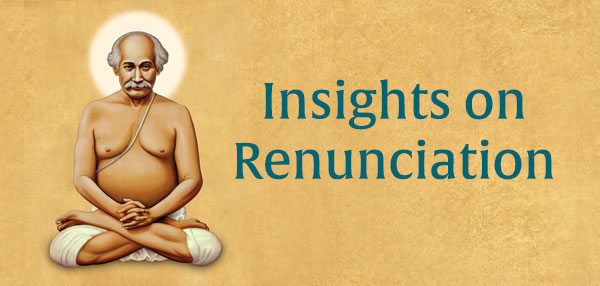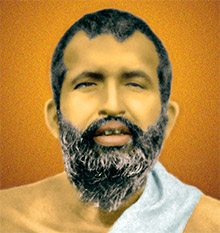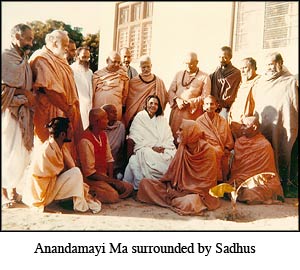
Q: I have read that Lahiri Mahasaya said no one should become a sannyasi. Is that true? If so, why did he say it?
Lahiri Mahasaya told his disciples that they should never become a Dasanami Sannyasi–a member of the Swami Order of Shankaracharya. The reason was purely yogic.
To become a member of that order, a ritual known as the Viraja Homa is performed. It is not a symbol, but a powerful ritual that alters the subtle bodies and karma of the person. Its purpose is to break all ties with this world. It transmutes the person’s worldly karma into spiritual karma.
This sounds very desirable, but if the person was mistaken in taking up sannyas and finds himself unable to continue it, his subsequent life will be chaotic and miserable because he has no positive karmic store on which to draw. He will be a failure in both his social and personal life, adrift like a broken cloud in the sky. A terrible fate!
But what has been done cannot be undone in the sense that there is no reversing of the effect of the Viraja Homa. At the same time, what has been undone cannot be done–that is, the karma that was wiped out cannot be restored. Practically speaking, there is no place for such a person in this world.
The tradition of sannyasa
The Shankara Order is very modern in the annals of Sanatana Dharma and India. The dharma shastras describe the way sannyas should be taken. It was done solely by the will of the individual. Though it might be preceded by a final performance of the daily rituals of a Sanatana Dharmi, the real sannyas was the simple declaration of intention to leave (or never enter) the householder life and departure for the forest and lifelong tapasya (sadhana). In modern times this was done by the renowned Swami (“Papa”) Ramdas of Anandashram. He simply had some cloth dyed gerrua, put it on and declared that from thenceforth his name was Ramdas, and walked out of his house never to return.
 Sri Ramakrishna’s story
Sri Ramakrishna’s story
Sri Ramakrishna told a story about true sannyas. One day a man found his wife very depressed. When asked why she was so sad, she told him that she was about to lose her brother who was married; that he was going to become a sannyasi. “How do you know he’s going to become a sannyasi?” asked her husband. “Because he is carefully setting all his affairs in order, getting everything all straightened out and arranging things so he can take up the monastic life” was the reply.
“Oh well,” her husband told her, “then you have nothing to worry about at all. He will never become a sannyasi.” When his wife protested that surely he would be a sannyasi since he was making so much preparation, he explained: “No one who acts like that, carefully planning everything out so it will be easy–and by that delaying the actual taking up of the monastic life–ever does it.” “I don’t understand what you mean,” objected his wife. The man answered: “Let me show you how it is really done.” So he went off in another room, and in a few minutes came back wearing the two cloths that make up the simple garb of a Hindu sannyasi. Saluting his wife he said: “Goodbye. From now on you are to me as my sister.” Then he walked out the door and was never seen again.
 Anandamayi Ma’s thoughts on Sannyasa
Anandamayi Ma’s thoughts on Sannyasa
One time in Kurukshetra, Anandamayi Ma spoke with me at length about what she called shukla sannyas (white sannyas) in which, impelled by a force deep within, the person simply dons the gerua clothing, adopts an appropriate name, and leaves home to lead the sadhu life. She was emphatic that no one need be “given” sannyas, but that the best was declaring oneself a sadhu with no ties, not even with the Shankara Order.
She told me that Swami Paramananda, the senior sadhu in the Anandamayi Sangha, had taken this kind of sannyas when he was only fourteen or fifteen years old, and was an ideal example of a sannyasi. Having read the dharma shastras, I knew that this was the only way prescribed in ancient times.
From the esoteric, yogic standpoint this is preferable because if the person returns to ordinary life, his positive outer karma remains and he can live an orderly and even virtuous life–unless it is his swadharma to be a sannyasi. In that case other kinds of misfortune result from turning from what should be done.
Lahiri Mahasaya’s Swami disciples
As you may recall from Autobiography of a Yogi, three disciples of Lahiri Mahasaya, Swami Pranabananda, Swami Keshabananda and Swami Kebalananda, are mentioned. Often the honorary title of “Swami” is used by others in relation to worthy spiritual teachers, even if they may be married. Actually, Pranabananda, Keshabananda and Kebalananda were naishtika brahmacharis: men who had solemnly declared their intention to permanently lead the life of a brahmachari. Sometimes a ritual of blessing is done at the time of their sankalpa and the donning of the monastic clothing (either white or gerrua according to their wish), but sometimes it is not.
Either way, it is not absolutely binding, and leaving it has no negative result unless they are abandoning their swadharma. In India I have met great saints and yogis who were naishtika brahmacharis. Some were called Swami and others were called Brahmachari.
Some Shankara swamis, such as Paramhansa Yogananda, take vidvat–non-ceremonial/ritualistic–sannyas when it is perceived that their inner disposition is such that the Viraja Homa is not needed: their minds are irrevocably fixed in the path of renunciation from birth.
In summation
Lahiri Mahasaya also disapproved of taking the usual Shankara Order sannyas because he said that the Viraja Homa so affects the subtle bodies that even the sannyasi’s mental sins are more destructive to him than the external sins of ordinary people. Therefore that path is extremely perilous, and he warned his disciples accordingly.
This is the truth of the matter. Lahiri Mahasaya never opposed leading the life of a renunciate as such, only entering it through Viraja Homa or an equivalent.
Further Reading:
- Holy Mother, Sri Ramakrishna and Mahendranath Gupta (“M”) about Renunciation
- Twelve Key Concepts in Yoga
- How To Get Vairagya by Swami Sivananda







